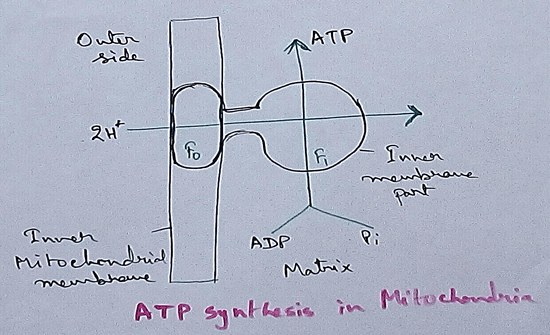Respiratory Balance Sheet
The major component that produced during the photosynthesis is Glucose which is further metabolised by the different metabolic pathways like glycolysis, Krebs cycle, TCA cycle and produces energy which is then utilise by the organism for their different physiological activities.
On account of consumption and production of ATP water molecules carbon dioxide molecule and oxygen molecule incomplete aerobic oxidation of one molecule of glucose through the various processes like glycolysis tricarboxylic acid cycle or electron transport chain or electron transport system is describe below:
In the process of glycolysis the first step is conversion of glucose to glucose 6 phosphate by the addition of inorganic phosphate molecular to glucose which is produced due to the breaking down of ATP molecules. Thus this is an ATP consumption process.
Fructose 6 phosphate is then converted to Fructose 1 6 bisphosphate where again another molecule of inorganic phosphate is attached to the fruit of 6 phosphate and one molecule of ATP is consumed as it degraded to give inorganic phosphate.
Next two molecules of glyceraldehyde 3 phosphate is converted to 13 diverse for glyceric Acid and produces NADPH2 free then undergoes in the ecosystem and give rise to six molecules of ATP.
Another energy producing state is conversion of two molecules of 1, 3 di phosphoglyceric acid into 3 phosphoglyceric acid where two molecules of ATP are produced as each ATP molecule is formed from each conversion.
Next two phosphoenolpyruvic acid is converted to into two molecules of pyruvic acid. In this step of glycolysis ATP molecules are produced from every step. As a result total 8 molecules of ATP are produced during the conversion of glucose into pyruvic acid before entering into the TCA cycle.
Oxidative Decarboxylation of Pyruvic Acid - During oxidative decarboxylation of pyruvic acid, pyruvic acid molecule is converted to acetyl CoA, NADPH2 is produced which will pass through the ETS cycle and produces three molecules of ATP from each NADPH2. As two molecules of pyruvic acid are produced during glycolysis, thus two molecules of NADPH2 are produced during oxidative decarboxylation of pyruvic acid which ultimately give rise to the six molecules of ATP via ETS cycles.
TCA cycle - in TCA cycle are
tricarboxylic acid cycle energy molecules are produced in different reactions
which are described below-
Isocitrate acid is converted into Alpha ketoglutaric acid that produces NADPH2. Ultimately three molecules of ATP are produced by ETS cycle. Alpha ketoglutaric acid is converted into succinyl CoA where again two molecules of NADPH2 are produced during this reaction which pass into the ETS cycle and produces six molecules of ATP. Next succinyl CoA is converted to succinic acid that produces two molecules of ATP. Succinic acid is again converted to fumaric acid that produces two molecules of FADH2 that ultimately producers 4 molecules of ATP. During the conversion of maleic acid into Oxalic acetic acid six molecules of ATP are produced. Thus total 24 molecules of ATP.
Total 8 + 6 + 24 = 38 molecules of ATP.
From Respiratory Balance Sheet Acid Cycle to HOME PAGE
Recent Articles
-
Plants Development | Definition | Leaf Development | Factors Affecting
Apr 22, 25 02:31 PM
Definition of development- development is a biological process which can be defined as the process in which there is sequence of qualitative changes towards a higher or more Complex state.It consists… -
Differentiation, Dedifferentiation and Redifferentiation | Definition
Apr 21, 25 01:16 PM
Cells from the root apical meristem and shoot apical meristem the camera that differentiate , mature to perform different functions. This process by which the cells undergo different major structural… -
Explain about Growth in Plants |Definition of Growth & Differentiation
Feb 27, 25 02:07 PM
Growth is a permanent increase in length or volume of an organism that brought upon by an increase in its dimensions due to synthesis of new protoplasmic material. -
Definition of Respiratory Quotient | calculation | Application | Plant
Dec 02, 24 12:09 AM
Definition of respiration quotient- the ratio of the carbon-dioxide evolved to that of the oxygen consumed by a cell, tissue, plants or animals in a given time is called respiratory quotient. It is us… -
Amphibolic Pathway | Definition | Examples | Pentose Phosphate Pathway
Jun 06, 24 10:40 AM
Definition of amphibolic pathway- Amphibolic pathway is a biochemical pathway where anabolism and catabolism are both combined together. Examples of amphibolic pathway- there are different biochemical…









New! Comments
Have your say about what you just read! Leave me a comment in the box below.